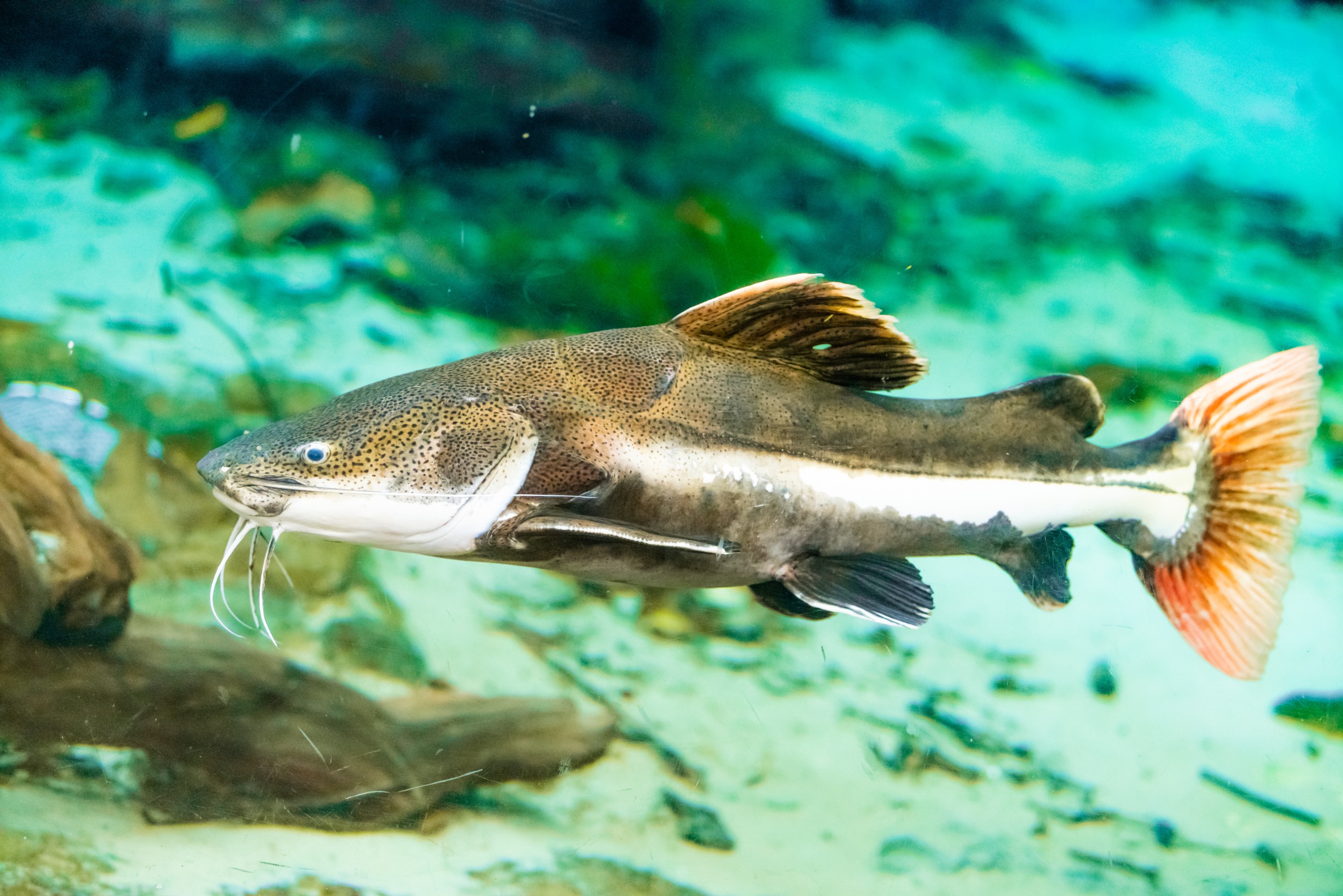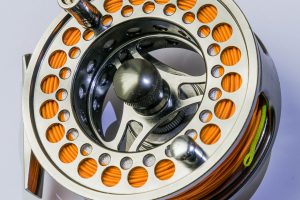Catfish and lake trout are two popular fish species that can be found in many freshwater bodies of water. While they may look similar at first glance, there are several key differences between these two fish that make them unique. Understanding these differences can help anglers better identify and catch these fish, as well as appreciate their distinct characteristics.
One of the main differences between catfish and lake trout is their physical appearance. Catfish typically have a broad, flat head and a long, slender body with a tapered tail. They also have barbels or “whiskers” around their mouths, which they use to help locate food in murky water. In contrast, lake trout have a more streamlined body shape, with a pointed head and forked tail. They also have a distinctive speckled pattern on their skin, which can help them blend in with their surroundings.
Another key difference between these two fish is their habitat and behavior. Catfish are bottom-dwelling fish that prefer slow-moving or stagnant water, such as ponds, lakes, and rivers. They are also known for their scavenging behavior, feeding on a variety of prey including insects, crustaceans, and small fish. Lake trout, on the other hand, are typically found in colder, deeper waters of lakes and reservoirs. They are predatory fish that feed on smaller fish, such as minnows and smelt, and are known for their aggressive behavior when hunting.

Defining Catfish and Lake Trout
Characteristics of Catfish
Catfish are freshwater fish that are found in rivers, lakes, and streams throughout the world. They are known for their whisker-like barbels, which are used to locate food in murky waters. Catfish have a flat head, a scaleless body, and a wide mouth with sharp teeth. They are bottom feeders and primarily eat other fish, insects, and crustaceans.
Catfish come in a variety of species, including channel catfish, blue catfish, and flathead catfish. They can range in size from a few inches to several feet long. Some species are popular game fish, while others are farmed for food.
Characteristics of Lake Trout
Lake trout, also known as Mackinaw trout, are found in cold, deep lakes throughout North America. They have a streamlined body, a forked tail, and small scales. Lake trout can vary in color from light gray to dark green or brown, with white spots on their sides.
Lake trout are predators and feed on smaller fish, including other trout, as well as crustaceans and insects. They can grow to be quite large, with some individuals reaching over 50 pounds.
In terms of taste, catfish have a mild, sweet flavor and a firm, white flesh. Lake trout, on the other hand, have a richer, more oily flavor and a pinkish-orange flesh. Both fish are popular for cooking and can be prepared in a variety of ways, including grilling, baking, and frying.
Overall, while catfish and lake trout share some similarities, such as being freshwater fish and predators, they have distinct differences in their appearance, habitat, and taste.

Habitat and Distribution
Catfish Habitats
Catfish are found in freshwater habitats such as rivers, lakes, ponds, and streams. They prefer slow-moving or still waters that have a muddy or sandy bottom. Catfish can also be found in deep pools or holes, under logs, and near submerged vegetation. They are native to North America but have been introduced to other parts of the world.
Lake Trout Habitats
Lake trout are found in cold freshwater lakes and rivers in North America, Europe, and Asia. They prefer deep, clear, and cold waters with a rocky or gravelly bottom. Lake trout are often found in large lakes and reservoirs, but they can also be found in smaller lakes and rivers. They are native to North America but have been introduced to other parts of the world.
Lake trout have a wider distribution than catfish, as they are found in North America, Europe, and Asia. Catfish, on the other hand, are primarily found in North America.
Physical Differences
Body Shape and Size
One of the most apparent physical differences between catfish and lake trout is their body shape and size. Catfish have a wider and flatter body, while lake trout have a more streamlined and elongated body. Catfish can grow to be quite large, with some species reaching over 100 pounds, while lake trout typically range from 2 to 20 pounds.
Skin Texture and Coloration
Another physical difference between catfish and lake trout is their skin texture and coloration. Catfish have smooth, scaleless skin, while lake trout have small, smooth scales covering their body. Catfish also have a mottled brown or greenish-brown coloration, while lake trout have a dark green or grayish-blue coloration with light spots.
Overall, these physical differences can help distinguish between catfish and lake trout, making it easier for anglers and fish enthusiasts to identify these two types of fish.
Dietary Habits
Catfish Diet
Catfish are known to be omnivores, meaning they eat both plants and animals. They are opportunistic feeders and will consume anything that fits in their mouth. Their diet varies depending on their habitat and size, but they typically feed on insects, crustaceans, small fish, and algae. They are also known to scavenge on dead animals and will eat almost anything that is available.
Lake Trout Diet
Lake trout are carnivorous and feed mainly on other fish. They are apex predators in their ecosystem and will consume any fish that is smaller than them. Their diet consists of small fish such as smelt, perch, and whitefish. They also eat insects, crustaceans, and mollusks. Lake trout are known to be opportunistic feeders and will adjust their diet based on the availability of their prey.
Overall, catfish and lake trout have different dietary habits. While catfish are omnivores and will eat almost anything, lake trout are carnivores and feed mainly on other fish. Their diet varies depending on their habitat and the availability of their prey.
Fishing Techniques
Catfish Fishing Methods
Catfish are bottom-dwelling fish that can be caught using a variety of fishing techniques. One of the most popular methods is using a simple rig with a hook, sinker, and bait. Anglers can use live bait like worms, minnows, or even chicken livers to attract catfish. Another popular technique is using a jig or spinner bait, which can mimic the movements of a live fish and attract catfish that are looking for an easy meal.
Another popular catfishing technique is using a trotline or jug line. These are long lines with multiple hooks that are set out in the water and left to catch catfish on their own. This method is great for catching large numbers of catfish, but it requires a lot of patience and can be time-consuming.
Lake Trout Fishing Methods
Lake trout are predatory fish that can be caught using a variety of techniques. One of the most popular methods is trolling. Anglers can use downriggers to get their lures deep into the water where lake trout are often found. They can also use spoons or plugs that mimic the movements of small fish to attract lake trout.
Another popular technique is jigging. Anglers can drop a jig or baited hook to the bottom of the lake and then quickly reel it up and down to mimic the movements of a small fish. This can be an effective way to catch lake trout that are feeding near the bottom of the lake.
Finally, anglers can also use bait to catch lake trout. Live bait like minnows or worms can be effective, as can artificial baits like PowerBait or Gulp! These baits can be fished on a simple rig with a hook and sinker, or they can be used with a jig or spinner bait to increase their effectiveness.
Culinary Uses
Both catfish and lake trout are popular choices for cooking due to their mild flavors and versatile textures. However, there are some differences in their culinary uses.
Catfish
Catfish is often used in southern-style cooking and is a staple in dishes such as gumbo and jambalaya. It is also commonly breaded and fried to create a crispy exterior and tender interior. In addition, catfish can be grilled, baked, or broiled, and pairs well with a variety of seasonings and sauces.
Lake Trout
Lake trout has a firmer texture than catfish and is often used in dishes that require a meatier fish. It is commonly smoked or grilled and pairs well with bold flavors such as lemon, garlic, and herbs. Lake trout is also a popular choice for sushi and sashimi due to its clean and delicate flavor.
When it comes to choosing between catfish and lake trout for a recipe, it ultimately depends on the desired texture and flavor profile. Catfish is a great option for dishes that require a softer texture, while lake trout is ideal for dishes that require a firmer texture and a more delicate flavor.
Conservation Status
Both catfish and lake trout are popular game fish, but their conservation statuses differ significantly. Lake trout is classified as a species of “least concern” by the International Union for Conservation of Nature (IUCN). This indicates that the population of lake trout is stable, and there are no major threats to their survival.
On the other hand, the conservation status of catfish varies depending on the species. Some species of catfish, such as the flathead catfish and the blue catfish, are considered invasive in some regions and pose a threat to native fish populations. Therefore, their populations are closely monitored and managed to prevent further spread. Other species of catfish, such as the channel catfish, are widely distributed and have stable populations, making them less of a conservation concern.
Overall, it is important for anglers to be aware of the conservation status of the fish they catch and to follow local regulations to help protect these species for future generations.











